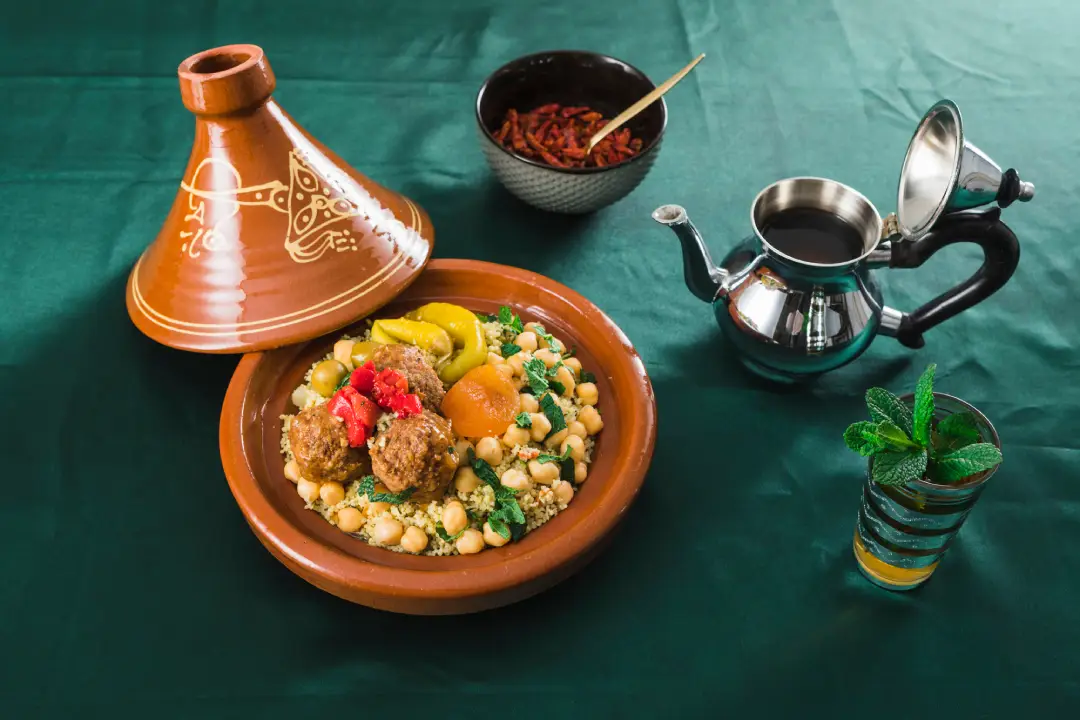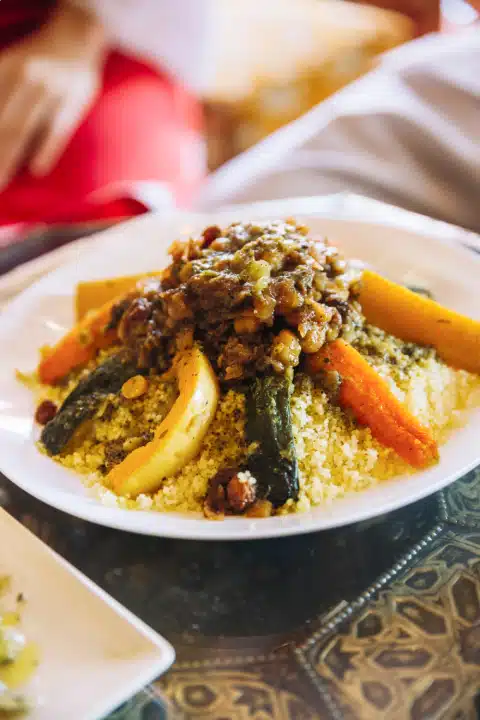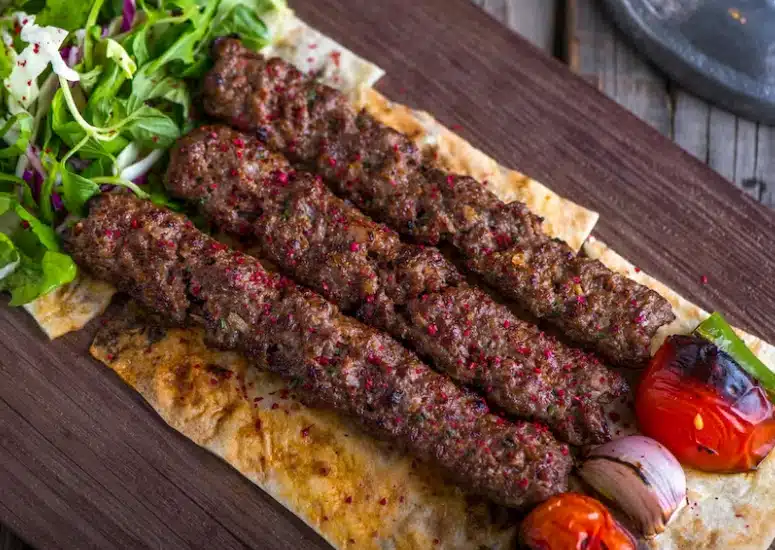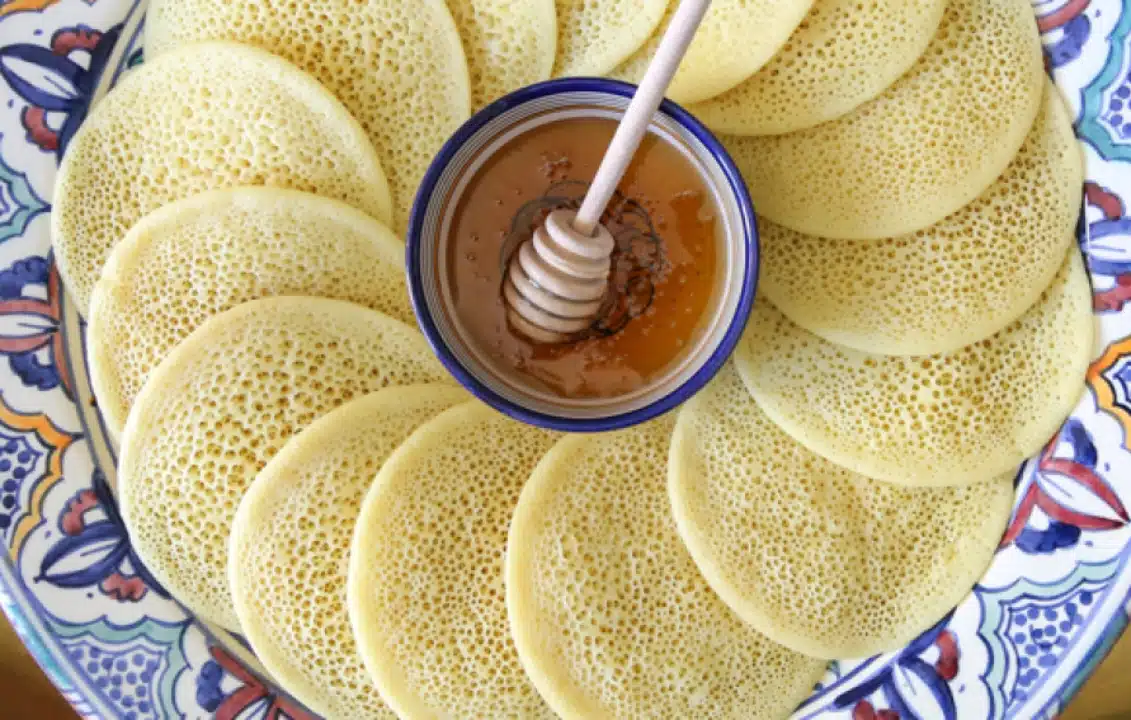14 Top Restaurants in Agadir 2025 | Best Places to Eat in Morocco
Discover the best restaurants in Agadir! From fresh seafood by the coast to traditional Moroccan tagines and international fare, enjoy delightful & affordable dining.
Have you ever wondered what it’s like to explore a country through its cuisine? In Morocco, food is more than just a meal—it’s a journey through history, culture, and heartfelt traditions. In this article, we’ll introduce you to 18 traditional Moroccan dishes you should experience — where every bite reveals a story rooted in heritage and community. Get ready to dive into a world of rich flavors, age-old recipes, and legendary hospitality.
Morocco is one of the most captivating destinations in the world, celebrated for its stunning landscapes, vibrant culture, and welcoming spirit. Its cuisine is equally remarkable, blending spices, textures, and aromas in ways that have been perfected over generations. From the bustling streets of Tangier to the vast Moroccan Sahara, authentic Moroccan meals showcase a deep connection to place and people. Here are 18 of the most beloved Moroccan culinary specialties that await your discovery.

Tagine is perhaps the most iconic of all Moroccan dishes. It’s a slow-cooked stew traditionally made with tender meat, seasonal vegetables, and a harmonious blend of aromatic spices.
The dish gets its name from the unique clay pot with a conical lid that locks in moisture and enhances flavor — delivering a rich, melt-in-your-mouth experience.
There isn’t just one type of tagine. Across Morocco, you’ll find countless variations — from beef and prunes, to chicken with preserved lemons, to seafood or even fully vegetarian versions.
Whether you’re enjoying it in a family home or a local eatery, this traditional Moroccan specialty is an unforgettable part of the culinary journey.
️ Pro tip: Try a lamb tagine in the High Atlas, or sample a fish tagine in coastal Essaouira for a true taste of regional diversity.

Couscous is a staple of traditional Moroccan cuisine, often served on Fridays as part of family gatherings.
This beloved dish consists of steamed semolina grains topped with a hearty mix of vegetables, chickpeas, meat, and savory broth.
For centuries, couscous has been a symbol of hospitality and togetherness. Whether you enjoy it in a local home or during a special event, this authentic Moroccan recipe embodies warmth, flavor, and cultural depth.
Did you know? In some parts of Morocco, sweet versions of couscous are also served — often with cinnamon, raisins, or caramelized onions.
Often referred to as Morocco’s most unique pie, Bisteela (or Pastilla) is a delightful fusion of sweet and savory flavors.
This iconic dish layers shredded chicken, ground almonds, cinnamon, and powdered sugar inside delicate phyllo dough, baked to a perfect crisp.
Morocco is also known for a seafood variation of Bisteela, which combines mixed seafood with vermicelli noodles and a rich, spiced sauce — offering a completely different but equally delicious experience.
Don’t miss: Both versions of this traditional Moroccan delicacy are worth trying — you might just fall in love with both!
Harira is a beloved traditional Moroccan soup, typically served during Ramadan to break the fast.
This hearty and nutritious bowl blends tomatoes, lentils, chickpeas, and herbs with warming spices like cinnamon and ginger.
While commonly enjoyed with dates and honey, Harira is popular year-round and often served with hard-boiled eggs or warm bread.
It’s a comforting example of Moroccan home cooking at its best.
Cultural note: Many families consider Harira the ultimate expression of love and tradition during gatherings.
For lovers of roasted meat, Mechoui is a must-try.
This dish features a whole lamb or goat slowly roasted until the meat becomes tender, juicy, and full of flavor.
It’s typically seasoned with just salt, cumin, and coriander — proof that simplicity can be absolutely delicious.
More than a dish, Mechoui is a Moroccan culinary ritual, often prepared for weddings, feasts, or big celebrations.
Pro tip: Ask for Mechoui served with flatbread and a side of cumin salt — traditional and irresistible.
Zaalouk is a popular Moroccan side dish made primarily from eggplant and tomatoes.
Seasoned with garlic, paprika, cumin, and olive oil, this smoky, savory salad is often served warm or at room temperature with fresh bread.
It’s a favorite among vegetarians yet loved by all for its rich flavor and simplicity.
Whether as a dip, starter, or complement to grilled meats, this traditional Moroccan specialty adds depth to any meal.
Tip: Enjoy Zaalouk with khubz (Moroccan bread) and olives for an authentic local experience.
Msemen is a flaky, square-shaped Moroccan pancake that’s a breakfast staple and street food favorite.
The dough is folded and layered multiple times to achieve its distinct chewy texture with a crispy exterior.
Often enjoyed with honey, jam, or soft cheese alongside a glass of mint tea, Msemen is an essential part of Moroccan food culture and a perfect way to start your day.
Try this: Pair warm Msemen with amlou (a spread made from almonds, argan oil, and honey) for a uniquely Moroccan treat.

Kefta refers to spiced ground meat — typically beef or lamb — shaped into patties, skewers, or meatballs.
Seasoned with herbs like parsley, coriander, cumin, paprika, and garlic, it’s then grilled or cooked in sauce for maximum flavor.
A favorite in both street stalls and home kitchens, Moroccan kefta dishes are often served with tomato-based sauces or stuffed into sandwiches with grilled vegetables.
Local tip: Kefta tagine with poached eggs is a comforting version you’ll find in many Moroccan homes.
Often called “Moroccan whiskey,” mint tea is more than a drink — it’s a symbol of Moroccan hospitality.
This sweet green tea, infused with fresh spearmint leaves, is served throughout the day, whether during meals, meetings, or moments of relaxation.
Pouring it with a high arc from a teapot is part of the tradition, creating a light froth and releasing the tea’s aroma.
It’s the heart of Moroccan social life.
Cultural insight: Refusing mint tea can be seen as impolite — always say yes to a glass!
Khubz is the Arabic and Darija word for Moroccan bread — a daily essential in every household.
Round and flat, it has a slightly chewy interior with a crisp crust, perfect for scooping tagines, dipping in olive oil, or accompanying soups.
Baked in communal ovens or at home, khubz represents the simplicity and soul of Moroccan home cooking.
Fun fact: Many families bring their dough to a neighborhood oven (ferran) for baking — an age-old community tradition.
If you love seafood, a visit to Essaouira is a must.
This coastal city is famous for its fresh catches like grilled sardines, fried calamari, and seafood tagines, all enjoyed alongside the salty ocean breeze.
Though not traditional Moroccan fare, Essaouiri seafood has become an essential part of the country’s diverse food culture and a favorite among locals and tourists alike.
Tip: Try the freshly grilled sardines right at the fish market for the ultimate seaside treat.
Maakouda are deep-fried potato patties seasoned with herbs and spices, commonly sold by street vendors across Morocco.
Crispy on the outside and soft inside, they make a perfect snack or side dish.
Often served with spicy harissa sauce, maakouda offers a flavorful glimpse into Moroccan street food traditions.
Snack idea: Pair maakouda with a cup of mint tea for a delicious street-side experience.
Tanjia is a slow-cooked meat dish unique to Marrakech.
Prepared in a clay jar with lamb or beef, preserved lemons, and a blend of special spices, it’s traditionally cooked in the city’s communal ovens.
The result is tender, aromatic meat bursting with deep flavors — a true example of authentic Moroccan recipes.
Cooking tip: The slow cooking process is key to unlocking Tanjia’s unforgettable taste.

Baghrir, known as Moroccan “thousand-hole pancakes,” are light, spongy, and full of tiny holes that soak up honey and butter beautifully.
Often enjoyed at breakfast or as a snack, these pancakes are a delightful part of Moroccan home cooking and are usually served drizzled with honey or olive oil.
Serving suggestion: Pair Baghrir with fresh mint tea for a classic Moroccan breakfast.
Mrouzia is a festive dish prepared especially during Eid al-Adha.
It features lamb slow-cooked with honey, almonds, and a special spice mix known as Mrouzia spices.
This sweet and savory combination is a remarkable Moroccan culinary specialty that captures the essence of celebration.
Festive favorite: Don’t miss trying Mrouzia during major Moroccan holidays.
Rfissa is a traditional dish served during family gatherings and special occasions.
It consists of shredded flatbread soaked in a flavorful broth, topped with tender meat and an aromatic sauce.
This dish embodies Moroccan hospitality and is a comforting expression of Moroccan food culture.
️ Tradition: Rfissa is often served to new mothers or during celebrations.
Chebakia is a deep-fried Moroccan pastry shaped like a flower, soaked in honey and rosewater syrup.
It’s especially popular during Ramadan as a sweet treat to break the fast.
Often paired with Harira soup, Chebakia is a delicious example of Moroccan festive foods.
Sweet tip: Enjoy Chebakia with a cup of mint tea for a perfect end to a meal.
Amlou is a rich, nutty spread made from roasted almonds, argan oil, and honey.
It’s commonly enjoyed with bread or pancakes and is a unique Moroccan delicacy.
This flavorful spread is a true representation of Moroccan home cooking and the country’s rich culinary heritage.
Try it: Amlou pairs wonderfully with warm msemen or baghrir for a special treat.
As you savor these 18 Traditional Moroccan Foods, you’ll truly feel the warmth and generosity of the Moroccan people. Food in Morocco is not just nourishment; it is an expression of love and a means of connecting with others.
Whether you are exploring the never-sleeping streets of the medina, sitting in a crowded market square, or dining in a serene riad, you will experience the essence of Moroccan hospitality.
You can also read about:
No Comments